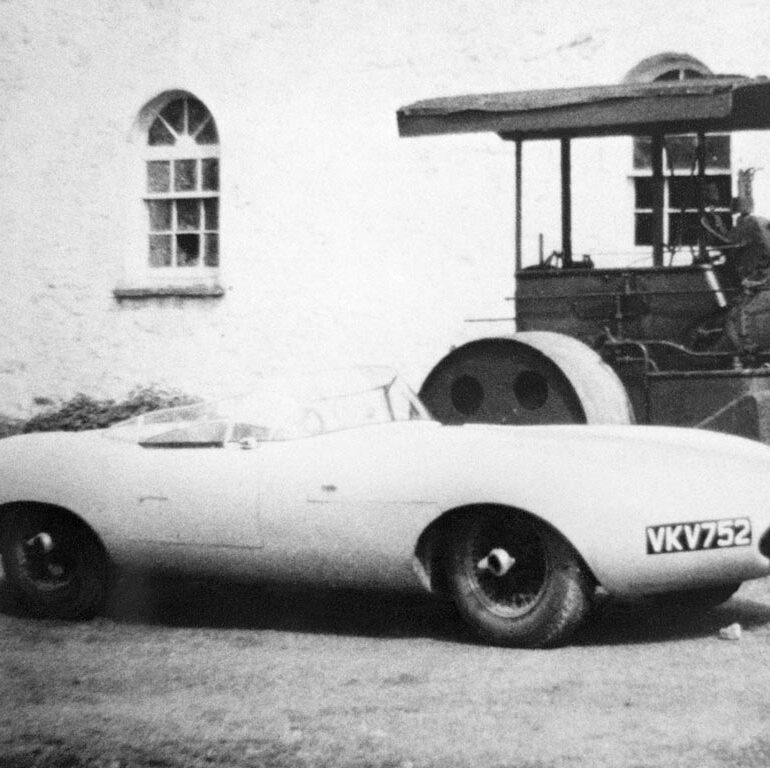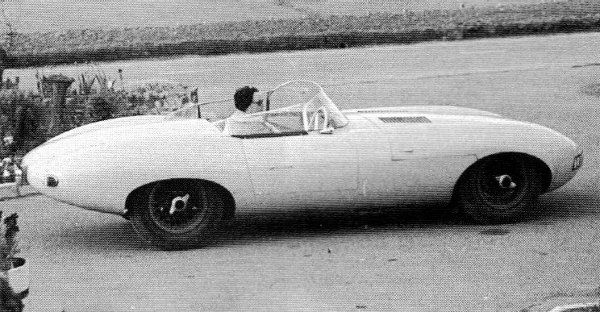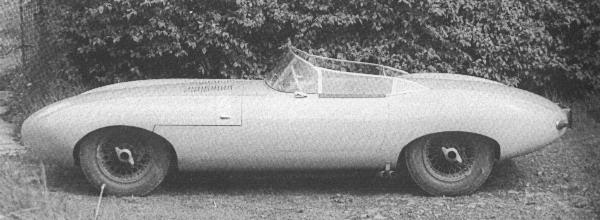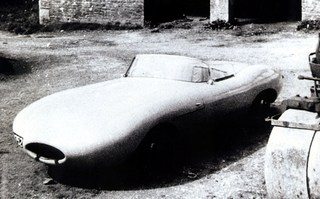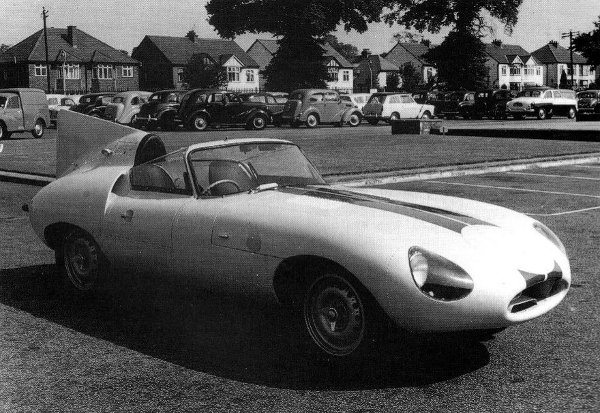1957 Jaguar E1A
Following much of the same design principles as the D-Type, E1A was Jaguar’s first move towards the iconic E-Type. Devoid of headlights it was built using proven race car engineering which included an aluminum monocoque and a shape that paid close attention to aerodynamics. Shop superintendent Phil Weaver said it was “lovely little car, about a two-thirds scale model of the eventual E-Type with a 2.4-litre engine.”1
In 1956 the Competition Department at Jaguar was renamed into the Prototype shop for the explicit purpose of developing the D-Type into a usable production and race car. Their first product known as E1A stood for E-Type car number 1 and the A reffed to it’s aluminum monocoque body.
With this car, Jaguar was testing and implementing an independent rear suspension. Their hope was to have a competitive package available in 1959, but Sir William Lyons wanted to ensure superiority over all the competitors before Jaguar officially re-entered racing.1
E1A was primarily conceived under the direction of Bill Heynes and envisioned by Malcom Sayer who did preliminary calculations and drawings from models. Cyril Crouch, Jaguar’s chief body engineer, said the C, D and E Types “were what we call fag packet jobs in that they were done in the shop and drawn afterward.”1
The overall shape of E1A came from the D-Type, but it was nearly two feet longer. The hood didn’t need a power bulge as seen on later cars because the 2.4-litre engine was quite compact. The car was very low and it had a rear tail that wholly different from the production cars. The design wasn’t too dissimilar from the Alfa Romeo Disco Volante which inspired Malcom Sayer in a good way.
Much of the body was put together with rivets and aluminum panels with divet holes that were crafted by Abbey Panels. While lightweight and rigid, this technique was typical of race cars and deemed too expensive for later production. Built for testing, the car was only fitted an XK-SS windscreen, no headlights and no soft-top.
Almost a year after the project began, E1A was tested by Peter Jennings of The Motor in May of 1958. During his test run through 48 miles of country road, the car beat his record of 50 seconds with an Aston Martin. He later described it as a “potential world beater.”1 Not long after this report, Sir William Lyons approved production of the E-Type.
In total three E-Type pop-rivet prototypes were manufactured before Cyril Couch was given the task of drawing up the final shape in steel. One of these, E2A, was later converted into an full race car and taken to Le Mans.
Sources & Further Reading.
1. Porter, Philip. Jaguar E-Type The Definitive History. Foulis: 1989.
In Detail
| type | Concept / Prototype Car |
| built at | Conventry, England |
| body stylist | Malcom Sayer, Bob Knight |
| engineers | Tom Jones, Len Hayden, Bob Blake, Phil Weaver, Bob Knight, Bill Robinson |
| production | 3 |
| engine | Inline-6 |
| valvetrain | OHV, 2 Valves per Cyl |
| fuel feed | Twin SU HD8 |
| displacement | 2483 cc / 151.5 in³ |
| bore | 83 mm / 3.27 in |
| stroke | 76.5 mm / 3.01 in |
| power | 89.5 kw / 120 bhp @ 5750 rpm |
| specific output | 48.33 bhp per litre |
| bhp/weight | 147.6 bhp per tonne |
| torque | 193 nm / 142.3 ft lbs @ 2000 rpm |
| body / frame | Aluminum Monocoque |
| driven wheels | RWD |
| wheel type | 15-Inch |
| front tires | 5.90×15 |
| rear tires | 5.90×15 |
| front brakes | Discs |
| rear brakes | Inboard Discs |
| front wheels | F 38.1 x 12.7 cm / 15 x 5 in |
| rear wheels | R 38.1 x 12.7 cm / 15 x 5 in |
| f suspension | Wishbones w/Coil Springs |
| r suspension | Experimental |
| curb weight | 813 kg / 1792 lbs |
| length | 4320 mm / 170.1 in |
| width | 1600 mm / 63.0 in |
| transmission | 4-Speed Manual |
| top speed | ~209.17 kph / 130 mph |
| 0 – 1/4 mile | ~16.9 seconds |


